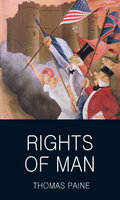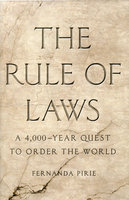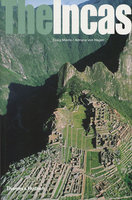New, Quality Gift Books - 50-90% off - over 2500 titles
Your basket is empty.
Categories History
History
History, military and Historical Biography of pre-20th century figures.
Use the handy Search below to find your historical topic of interest from our vast range.
Like most of those who study
history, he (Napoleon III) learned
from the mistakes of the past how
to make new ones.
- A. J. P Taylor
New DEMOCRACY IN AMERICA
Book number: 28847
Product format: Paperback
Bibliophile price
£4.00
|
|||
New THE ART OF WAR and THE BOOK OF LORD SHANG
Book number: 35497
Product format: Paperback
Bibliophile price
£4.00
|
HISTORY OF GIBBETING
Book number: 91580
Product format: Hardback
Bibliophile price
£8.00
Published price
£19.99
|
WILD EAST: Gunfights, Massacres
Book number: 91620
Product format: Hardback
Bibliophile price
£8.00
Published price
£20
|
|
PALACES OF THE REVOLUTION
Book number: 91939
Product format: Hardback
Bibliophile price
£7.00
Published price
£25
|
SHAKESPEARE MOTLEY: An Illustrated Assortment
Book number: 92105
Product format: Hardback
Bibliophile price
£5.75
Published price
£12.95
|
ROLE OF THE SCROLL: An Illustrated Introduction to Scrolls
Book number: 92034
Product format: Hardback
Bibliophile price
£4.50
Published price
£19.99
|
New DECLINE AND FALL OF THE ROMAN EMPIRE
Book number: 25261
Product format: Paperback
Bibliophile price
£5.00
|
LIFE OF A SMUGGLER: Fact and Fiction
Book number: 92165
Product format: Paperback
Bibliophile price
£5.00
Published price
£14.99
|
MEMORIES OF TIMES PAST: London
Book number: 92352
Product format: Hardback
Bibliophile price
£9.50
|
RULE OF LAWS
Book number: 92404
Product format: Hardback
Bibliophile price
£5.00
Published price
£25
|
LET ME TAKE YOU BY THE HAND
Book number: 92440
Product format: Paperback
Bibliophile price
£3.00
Published price
£9.99
|
MOST NOTORIOUS HIGHWAYMEN
Book number: 92143
Product format: Hardback
Bibliophile price
£7.00
Published price
£20
|
BIG AND SMALL: A Cultural History of Extraordinary Bodies
Book number: 92412
Product format: Hardback
Bibliophile price
£3.00
Published price
£20
|
EARTH SHATTERING EVENTS: Earthquakes, Nations
Book number: 92417
Product format: Hardback
Bibliophile price
£4.50
Published price
£18.95
|
FREEDOM: The Overthrow of the Slave Empires
Book number: 92419
Product format: Hardback
Bibliophile price
£1.50
Published price
$27.95
|
WISDOM'S WORKSHOP: The Rise of the Modern University
Book number: 92436
Product format: Hardback
Bibliophile price
£4.00
Published price
£30
|
INCAS
Book number: 92240
Product format: Paperback
Bibliophile price
£7.50
Published price
£14.95
|
VISITORS' HISTORIC BRITAIN: CORNWALL: Romans to Victorians
Book number: 92590
Product format: Paperback
Bibliophile price
£4.75
Published price
£12.99
|
BRUTUS OF TROY AND THE QUEST FOR THE ANCESTRY OF THE BRITISH
Book number: 92611
Product format: Hardback
Bibliophile price
£7.00
Published price
£19.99
|
MEDIEVAL KNIGHT
Book number: 92617
Product format: Hardback
Bibliophile price
£5.00
Published price
£12.99
|
CAPTAIN CUTTLE'S MAILBAG
Book number: 92652
Product format: Hardback
Bibliophile price
£2.75
Published price
£16.99
|
GLADIATORS: Fighting to the Death In Ancient Rome
Book number: 92665
Product format: Paperback
Bibliophile price
£2.25
Published price
£7.99
|
KNIGHTS: Chivalry and Violence
Book number: 92675
Product format: Paperback
Bibliophile price
£2.50
Published price
£7.99
|
ROMAN LITERARY CULTURE: From Plautus to Macrobius
Book number: 92693
Product format: Paperback
Bibliophile price
£6.00
Published price
£24.62
|
WORLD AFLAME: The Long War, 1914-1945
Book number: 92858
Product format: Hardback
Bibliophile price
£5.00
Published price
£25
|
SHORT HISTORY OF COFFEE
Book number: 92895
Product format: Paperback
Bibliophile price
£4.00
Published price
£9.99
|
UNDREAMED SHORES
Book number: 92904
Product format: Hardback
Bibliophile price
£4.50
Published price
£20
|
LEE AND GRANT AT APPOMATTOX
Book number: 92967
Product format: Paperback
Bibliophile price
£4.50
Published price
£8.99
|
QUEENS OF JERUSALEM: The Women Who Dared to Rule
Book number: 92734
Product format: Hardback
Bibliophile price
£6.50
Published price
£20
|
SO GREAT A PRINCE
Book number: 92736
Product format: Paperback
Bibliophile price
£3.75
Published price
$17.95
|
MAYFLOWER ENTHUSIASTS' MANUAL:
Book number: 92616
Product format: Hardback
Bibliophile price
£8.50
Published price
£25
|
| 1 - 36 of 237 results |
|




































